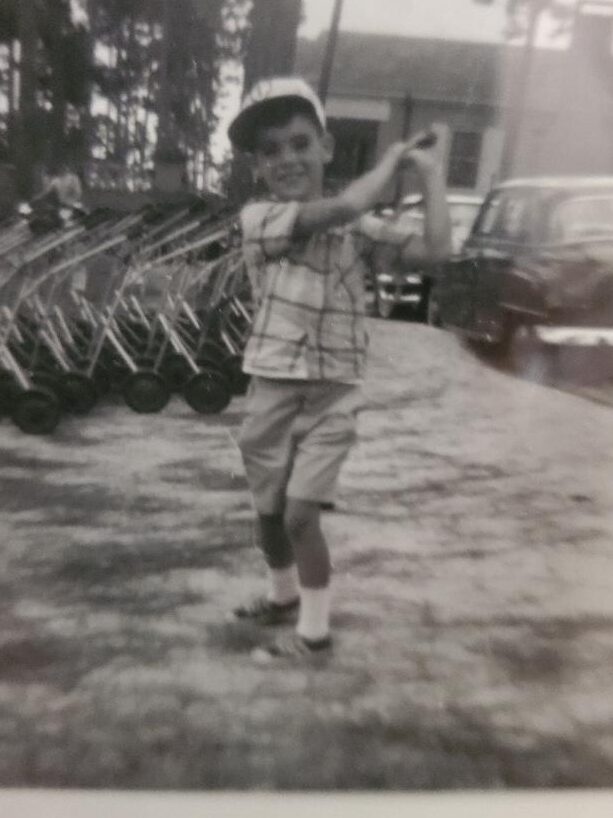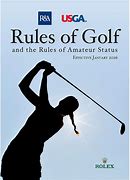Podcast: Play in new window | Download
Subscribe: RSS
As a golfer since the youthful age of eight, I have learned over the years that golf can be both incredibly rewarding and cruel.

If you eventually want to play competitive golf, you must also become quite familiar with and observe the rules of the game. The current Rules of Golf were developed jointly by the United States Golf Association (USGA) and the Royal and Ancient Society (initially from St. Andrews Golf Club in Scotland). Though the R&A codified its rules in 1897, the Rules of Golf were not published for public use until 1952. For most of golfers, golf’s little rule book is quite a boring read and is usually kept buried near the bottom of your golf bag (if you tote it around at all).
Though my own junior golf career peaked and ended after graduating from high school, the best golfers often continue into the college ranks and some will reach the professional levels. At each stage of competitive golf, though, the individual golfers are responsible for knowing the rules and self-enforcing them. With each step forward, knowing those rules becomes more and more critical.
Just last week at the PGA Championship, Rory McIlroy (a four-time major championship winner) was several shots behind the leaders on Friday’s second round. Rory’s tee shot on a par-3 hole found some heavy rough to the right side of the green. A reporter from ESPN (who was following the group) accidentally stepped on Rory’s golf ball and buried the ball deeper into the rough. What should he do?
It’s time to dust off our USGA Rule book for this one. Ah, here it is!
7.4 Ball Accidentally Moved in Trying to Find or Identify It – There is no penalty if your ball is accidentally moved by you, your opponent or anyone else while trying to find or identify it. If this happens, the ball must be replaced on its original spot (which, if not known, must be estimated).
Since no one (including the reporter) had actually seen the initial spot of the ball, McIlroy would be allowed to lift his ball to a little higher spot in the rough (assuming the reporter’s foot smashed it down to the bottom). Rory, though, insisted that his ball position couldn’t have been that good if the reporter wasn’t able to see it.
Despite the fact that the Rules of Golf would allow Rory McIlroy some latitude, he insisted on playing his shot from a deeper placement in the rough. He would go on to bogey the hole. Though he did make the cut, Rory McIlroy would finish the tournament tied for 33rd place at 2-under par.
However, Rory McIlroy earned more respect from golf fans worldwide for his sportsmanship and fair play under the circumstances.
This week, the US Amateur men’s championship is being played at the fabulous Bandon Dunes golf complex in southern Oregon along the Pacific Ocean. Having read and seen rave reviews about this golf course, I was eager to watch Thursday’s coverage on Golf Channel.
To enter this tournament, an amateur golfer must have a handicap of no more than 2.4 (well, I’m ineligible once again!) and qualify as one of the top 264 golfers from not only America but also from entrants around the world. Some golfers usually have to win one or more regional tournaments in order to arrive at this stage.
If accepted, you must pay an entrance fee of $175 and are responsible for your own transportation, food, and accommodations for the week of the tournament. For all of the time and costs, the US Amateur winner only receives a nice big trophy!
The top 264 qualifying golfers teed it up on Monday and Tuesday with the 64 players having the lowest 36 hole scores advancing into the final 64. The other 200 golfers headed home. The remaining golfers were seeded from #1 to #64 based on those scores and paired-off against each other in match play events through the rest of this week. To win the US Amateur, a golfer will have played an incredible 144 holes over a 7-day period. That equates to two PGA tour events squeezed into just one week!
On Thursday during the Round of 16 match play pairings, a University of Arkansas junior from Argentina lost in his match on the final hole of the day. The way he lost the match, though, was the real story.
Tied coming down the fairway of the par-5 18th hole at Bandon Dunes, Segundo Oliva Punta sent his third shot into a greenside sand trap. As he and his playing competitor, Tyler Strafaci from Georgia Tech, walked toward the green, Punta’s caddie walked down into the sand trap to take a closer look at the very important next shot.
That’s when I told my wife, “Look! The caddie just rubbed his palm back and forth in the sand trap to test the condition of the sand. That’s a penalty”!
The Golf Channel noticed, too. The caddie for Tyler Strafaci (his father) also noticed it, too.
At that moment, though, Segundo Oliva Punta wasn’t looking at what his caddie was doing. The golfer had walked ahead and was checking the flag position on the green.
When the golfer came back to his ball, his caddie was issuing rather strong denials that he had touched the sand. Unfortunately, the rules official with the group agreed that an infraction had occurred.
Let’s consult the USGA Rule Book once again.
12.2 Playing Your Ball in Bunker
b. Restrictions on Touching Sand in Bunker – Before making a stroke at your ball in a bunker, you must not deliberately touch sand in the bunker with your hand, a club or rake or any other object to test the condition of the sand and learn information for your next stroke.
In a match play event, the penalty is loss of the hole. In the case of Segundo Oliva Punta, that meant that he lost the 18th hole without even having a chance to play a shot from the bunker and seeing how his playing competitor scored on the hole.
He immediately lost the match. Due to this costly mistake made by his caddie, Segundo Oliva Punta would be heading home. All of the time, effort, and costs of his appearance in the US Amateur were gone due to an unfortunate decision by his well-intended caddie.
What’s worse was that the caddie wasn’t a close friend or relative of the amateur golfer. The young man was a local caddie who was likely hired for his extensive knowledge of the local golf course. According to the Rules of Golf, though, the caddie’s actions are subject to the same rules as the golfer.
Ouch. I’ve watched a lot of golf, but that was the saddest way to lose a match that I have ever seen.
Thankfully, Segundo Oliva Punta took the bad news from the rules official very well and wished his competitor well in the next round. He later said that he and his caddie were still on good terms, too. His maturity during a tough time was quite impressive!
It was a moment that both players and every viewer at home will remember. The Rules of Golf can be cruel at times, but they do serve to keep the game honest and competitive for all players.

